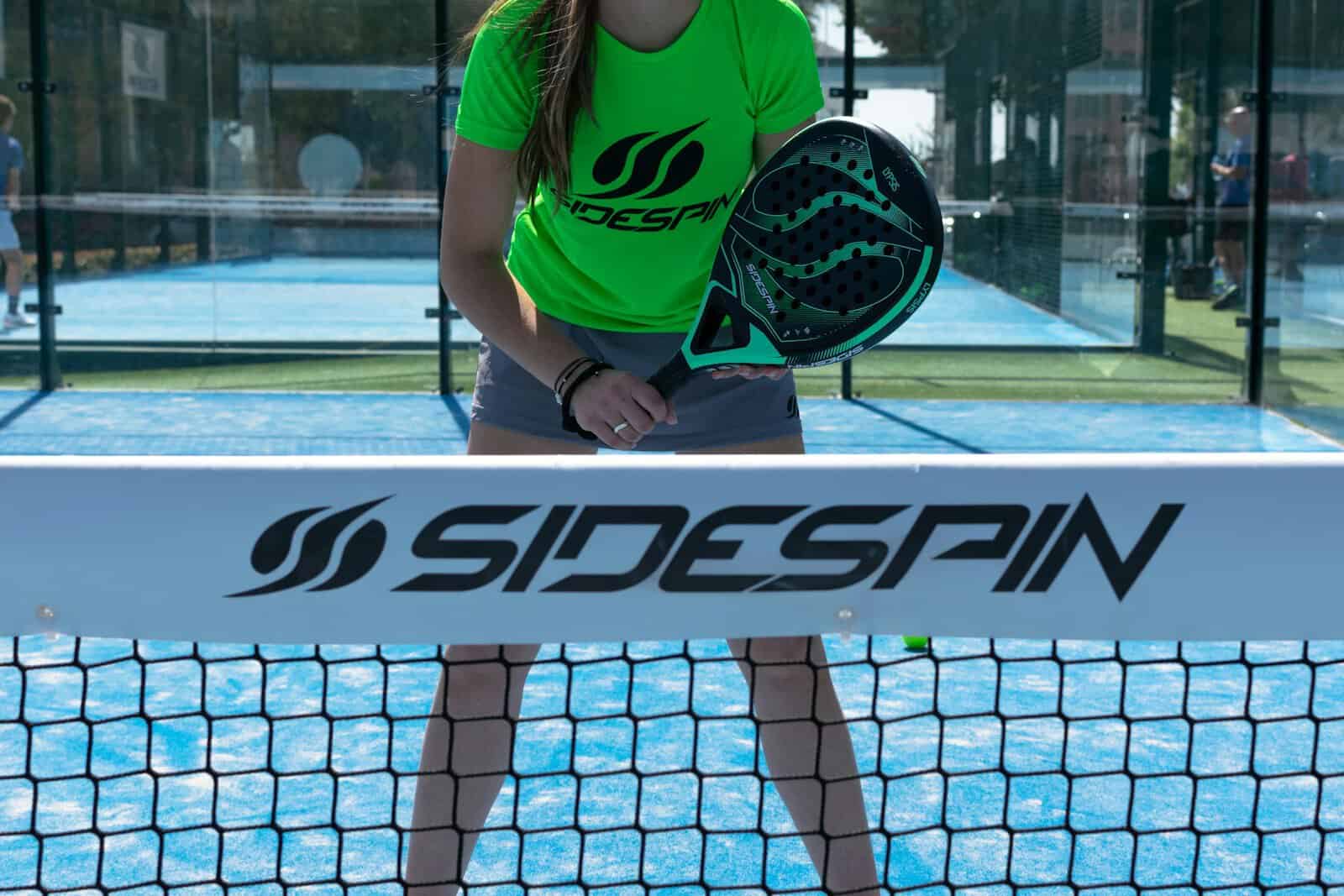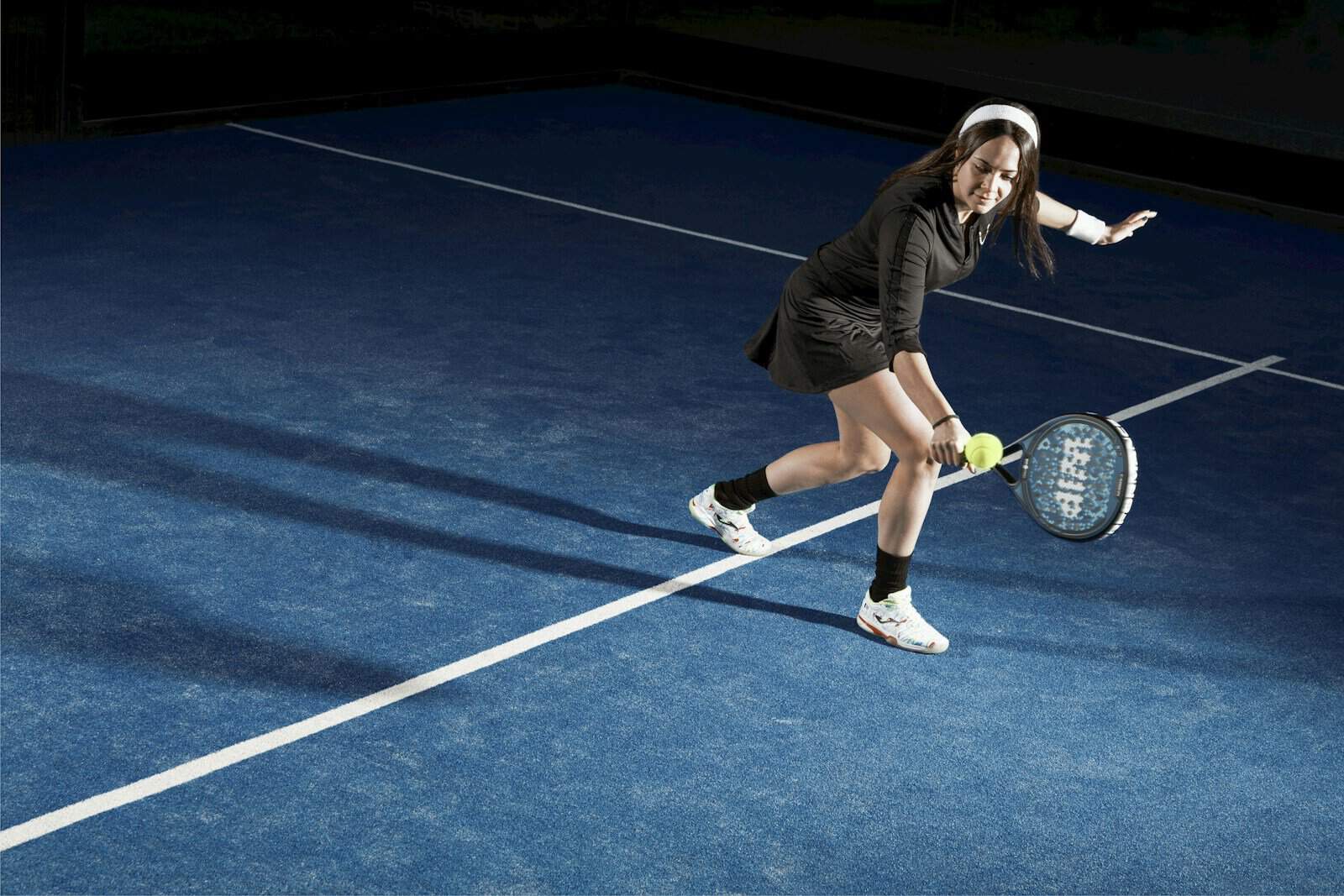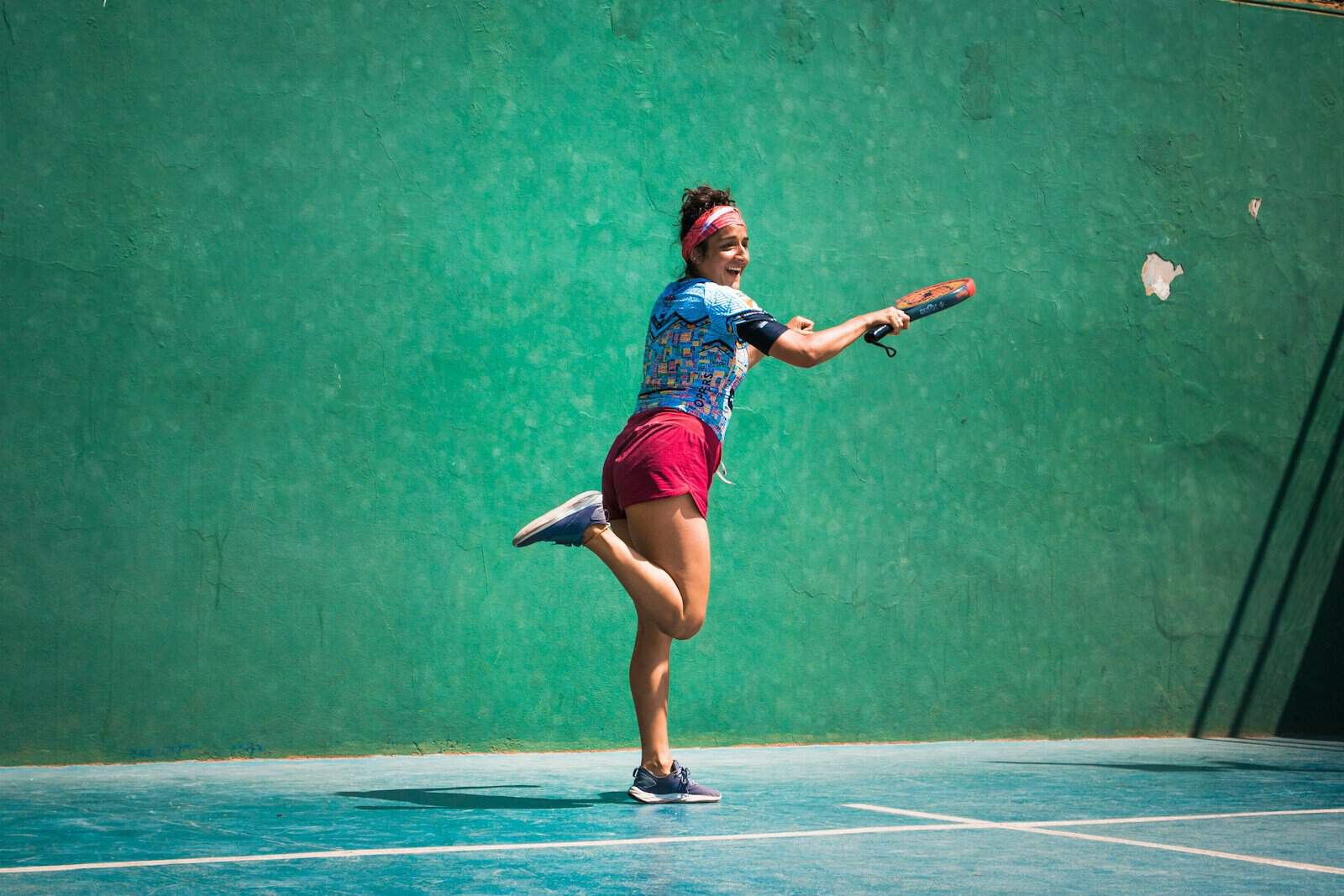Padel is an exciting sport that’s easy to pick up but tricky to master. As a beginner, you’ll want to focus on learning the basic techniques to build a strong foundation for your game. By mastering key padel skills like the serveThe Serve is the shot that starts the point in padel. It’s hit underhand, with the ball being stru… More, volleyA Volley is a shot executed before the ball bounces on the ground, typically played near the net. Vo… More, and lob, you’ll quickly improve your performance on the court.
Whether you’re brand new to padel or looking to refine your existing skills, understanding these fundamental techniques is crucial. They form the backbone of every successful padel player’s arsenal, regardless of skill level. With practice, you’ll soon find yourself executing these moves with confidence.
Let’s dive into the essential padel techniques that will help you elevate your game. From proper grip and stance to effective shot placement, we’ll cover everything you need to know to get started. By the end of this guide, you’ll have a solid grasp of the basic skills every padel player should master.
Understanding Padel
Padel is a unique racquet sport that combines elements of tennis and squash. It is played on a specially designed court with walls and uses specific equipment tailored for padel play.
History and Development
Padel started in Mexico in the 1960s. It quickly spread to Spain, where it gained massive popularity. The sport mixes tennis and squash rules, creating a fast-paced, exciting game.
Padel courts are smaller than tennis courts, making the game more accessible. The walls add a new dimension to play, allowing for creative shots and strategies.
Today, padel is growing rapidly worldwide. It’s especially popular in Europe and South America. Many tennis clubs are adding padel courts to meet rising demand.
The Padel Court
A padel court is enclosed by walls and measures 20m x 10m. The court surfaceThe Court Surface in padel is typically made of synthetic grass or turf, providing the right balance… More is typically artificial grass or synthetic turf.
Key features of a padel court:
- Glass walls at the back
- Side walls made of mesh and glass
- A netThe Net in padel is the barrier that divides the court into two halves. It’s lower than a tennis n… More dividing the court in half
- Service lines and sidelines
The walls are crucial to gameplay. You can play shots off them, similar to squash. This adds complexity and excitement to rallies.
The artificial grass surface provides good grip and allows for smooth ball movement. It’s easier on your joints compared to hard tennis courts.
Equipment Essentials
To play padel, you need specific gear:
- Padel racketA Padel Racket is solid, perforated, and shorter than a tennis racket, without strings. It’s typic… More: Solid with no strings, shorter than a tennis racket
- Padel ballsPadel Balls are specifically designed for the game, similar to tennis balls but slightly smaller and… More: Similar to tennis balls but with lower pressure
- Padel shoes: Designed for grip on artificial grass
Your padel racketA Padel Racket is solid, perforated, and shorter than a tennis racket, without strings. It’s typic… More is crucial. It’s made of foamFoam refers to the material used in the core of some padel rackets. Foam cores are known for providi… More or rubber with a textured surface. The sweet spot is larger than on a tennis racket, making it easier to hit powerful shots.
Padel ballsPadel Balls are specifically designed for the game, similar to tennis balls but slightly smaller and… More are like tennis balls but with less pressure. This makes them bounce less, suiting the smaller court size.
Proper footwear is essential. Padel shoes offer good grip and support for quick movements on the court surfaceThe Court Surface in padel is typically made of synthetic grass or turf, providing the right balance… More.
Basic Techniques and Strokes
Mastering the fundamental techniques and strokes in padel is crucial for improving your game. These skills form the backbone of your play and help you respond effectively to various situations on the court.
Serve and Return
The serveThe Serve is the shot that starts the point in padel. It’s hit underhand, with the ball being stru… More in padel is underhand and diagonal, bouncing behind the service line. To serveThe Serve is the shot that starts the point in padel. It’s hit underhand, with the ball being stru… More, stand behind the right service boxThe Service Box is the area of the court where the serve must land to be considered in play. It’s … More and hit the ball below waist level. Aim for control rather than power.
For a strong serveThe Serve is the shot that starts the point in padel. It’s hit underhand, with the ball being stru… More:
- Keep your feet shoulder-width apart
- Hold the racket with a continental gripThe Continental Grip is a versatile grip style in padel that allows players to hit a variety of shot… More
- Bounce the ball and hit it with an upward motion
When returning, position yourself just behind the service line. Stay alert and ready to move. Focus on placing your returnIn padel, a Return is the shot made after receiving a serve. A strong return can immediately put pre… More deep into your opponent’s court to put them under pressure.
Forehand and Backhand
ForehandThe Forehand is one of the primary strokes in padel, performed by swinging the racket with the palm … More and backhandThe Backhand in padel is a fundamental stroke where the player hits the ball with the back of their … More strokes are essential in padel. For both, maintain a proper grip and stance.
ForehandThe Forehand is one of the primary strokes in padel, performed by swinging the racket with the palm … More technique:
- Turn your body sideways
- Bring the racket back
- Step forward as you swing
- Follow through towards your target
BackhandThe Backhand in padel is a fundamental stroke where the player hits the ball with the back of their … More steps:
- Turn your body, non-dominant shoulder facing the netThe Net in padel is the barrier that divides the court into two halves. It’s lower than a tennis n… More
- Bring the racket back
- Step into the shot
- Swing and follow through across your body
Practice both strokes regularly to improve your control, power, and accuracy.
The Lob and Smash
The lob is a defensive shot hit high over your opponents’ heads. It’s useful when you’re under pressure at the netThe Net in padel is the barrier that divides the court into two halves. It’s lower than a tennis n… More. To execute a lob:
- Use an open racket face
- Scoop under the ball
- Aim high and deep into the court
The smash is an offensive shot used to counter lobs. For an effective smash:
- Position yourself under the ball
- Point with your non-racket hand
- Bring your racket behind your head
- Hit the ball at its highest point with a downward motion
Both shots require good timing and court awareness.
Volleying Tactics
Volleying is crucial in padel as much of the game is played near the netThe Net in padel is the barrier that divides the court into two halves. It’s lower than a tennis n… More. A volleyA Volley is a shot executed before the ball bounces on the ground, typically played near the net. Vo… More is hit before the ball bounces, usually close to the netThe Net in padel is the barrier that divides the court into two halves. It’s lower than a tennis n… More.
Key volleying tips:
- Keep your racket up and in front of you
- Use a short backswing
- Hit the ball with a firm wrist
- Aim for the gaps between your opponents
Practice volleys at different heights to improve your reflexes and control. Good volleying can put your opponents under pressure and create opportunities to win points.
Movement and Positioning
Good movement and positioning are key to success in padel. They help you cover the court better and set up more effective shots.
Court Awareness
Court awareness is vital in padel. Know where you are on the court at all times. Pay attention to your partner’s position too.
Keep an eye on the ball and your opponents. This helps you predict their shots. Stay alert for bounces off the walls.
Try to position yourself to cover as much of the court as possible. Move quickly to fill gaps your partner leaves. Practice reading the game to improve your court sense.
Footwork and Mobility
Good footwork is crucial for quick movement around the padel court. Use small, fast steps to stay light on your feet.
Work on your lateral movements. Padel involves a lot of side-to-side play. Practice shuffling and sidesteps to improve your speed.
The split step is a key technique. Use it just before your opponent hits the ball. It helps you react faster to their shot.
Do footwork drills to boost your agility. This will help your overall maneuverability on court. Good mobility lets you reach more balls and play better shots.
Defensive and Offensive Play
Your position changes based on whether you’re attacking or defending. When defending, stay back near the baselineThe Baseline is the back boundary line of the padel court, located parallel to the net. Players ofte… More. This gives you more time to react to shots.
Move forward quickly when you get a chance to attack. Getting to the net puts pressure on your opponents. It lets you play more aggressive shots.
Be ready to switchSwitch in padel refers to a tactical movement where partners change positions on the court during pl… More between offence and defence rapidly. Padel points can change quickly. Good positioning helps you adapt to these changes.
Practice moving as a team with your partner. Cover for each other and communicate your movements. This teamwork gives you an advantage over less coordinated pairs.
Tactics and Strategy
Padel requires smart gameplay and teamwork. You need to know how to use the court and work with your partner to win.
Playing Styles
In padel, you can play defensively or aggressively. Defensive play focuses on keeping the ball in play and forcing errors. You’ll want to hit deep shots and use the walls to your advantage. Stay back and wait for chances to attack.
Aggressive play aims to end points quickly. You’ll move forward often and try to hit winners. Volleys and smashes are key shots. The continental grip is useful for these shots.
Mix up your style to keep opponents guessing. Try the ‘diamond’ formation, where one player stays back while the other moves forward. This covers the court well and allows for quick attacks.
Making Use of the Walls
Walls are unique to padel and crucial for strategy. Use them to defend and attack. When defending, aim for high shots off the back wall. This gives you time to get back into position.
For attacking, try low shots that bounce off the side walls. These are hard for opponents to returnIn padel, a Return is the shot made after receiving a serve. A strong return can immediately put pre… More. The ‘teardrop’ shot, where you lob the ball to hit the side wallThe Side Wall in padel is a crucial element of the court’s design, allowing the ball to rebound and … More near the netThe Net in padel is the barrier that divides the court into two halves. It’s lower than a tennis n… More, can be very effective.
Practice reading how the ball will bounce off different parts of the wall. This skill helps you position yourself better and react faster to your opponent’s shots.
Communication and Teamwork
Good teamwork is vital in padel. Talk to your partner constantly. Call out who will take each shot to avoid confusion. Use simple words like “yours” or “mine” to be clear and quick.
Move as a unit on the court. When one player goes forward, the other should cover the back. This ‘one up, one back’ formation is common in padel.
Build trust with your partner. Encourage each other after good points and stay positive after mistakes. Good camaraderie can help you play better and enjoy the game more.
Improving Your Game
Getting better at padel takes dedication and practice. Focus on refining your skills through targeted drills and real match experience to see improvement in your gameplay. Additionally, analyzing your performance and addressing specific areas of weakness can significantly boost your progress. Seeking guidance from experienced players or coaches is another effective way to improve padel game techniques and gain valuable insights. Remember, consistency and a positive mindset are key to unlocking your full potential on the court.
Practice and Drills
Regular practice is key to improving your padel skills. Work on your forehand and backhand shots to build a strong foundation. Set up cone drills to enhance your footwork and agility on the court.
Try wall practice to improve your accuracy and timing. Hit the ball against the wall repeatedly, focusing on consistent placement and power. This helps you get a feel for how the ball bounces off different surfaces.
Volley practice is crucial for padel success. Set up close to the netThe Net in padel is the barrier that divides the court into two halves. It’s lower than a tennis n… More and have a partner feed you balls to hit. Work on both forehandThe Forehand is one of the primary strokes in padel, performed by swinging the racket with the palm … More and backhandThe Backhand in padel is a fundamental stroke where the player hits the ball with the back of their … More volleys.
Don’t forget to practise your serveThe Serve is the shot that starts the point in padel. It’s hit underhand, with the ball being stru… More. A strong serveThe Serve is the shot that starts the point in padel. It’s hit underhand, with the ball being stru… More can give you an edge in matches. Focus on placement and spinSpin refers to the rotation of the ball that affects its trajectory and bounce. In padel, different … More rather than just power.
Match Play and Scoring
Playing actual matches is vital for putting your skills to the test. Seek out better players to challenge yourself and learn new techniques.
Familiarise yourself with padel scoring:
- Games are won by the first team to reach 6 points
- Points are scored as 15, 30, 40, game
- If both teams reach 40, it’s called ‘deuce’
- Win two consecutive points after deuceDeuce in padel is a term used when the score in a game is tied at 40-40. When the game reaches deuce… More to win the game
Pay attention to your positioning on the court. Move as a team with your partner, covering the court effectively. Communication is key in doubles play.
Learn to use the walls to your advantage. Practise hitting shots off the glass to catch your opponents off guard.
Advanced Techniques
Mastering advanced padel techniques can elevate your game to new heights. These skills allow you to outmanoeuvre opponents and gain a competitive edge on the court.
Specialty Shots
The slice is a crucial technique to add to your arsenal. To execute it, angle your racket face slightly downwards and brush the ball with a smooth motion. This imparts backspinBackspin is a type of spin applied to the ball where it rotates backward as it travels through the a… More, making the ball drop quickly after crossing the netThe Net in padel is the barrier that divides the court into two halves. It’s lower than a tennis n… More.
Another key shot is the drop shot. To perform this, soften your grip and gently tap the ball just over the netThe Net in padel is the barrier that divides the court into two halves. It’s lower than a tennis n… More. The goal is to make it land in your opponent’s court with minimal bounce.
These specialty shots are effective for players of all ages and skill levels. Practice them regularly to improve your technique and surprise your opponents during matches.
Remember to vary your shot selection. Mixing power shots with deft touches will keep your opponents guessing and help you control the pace of the game.




